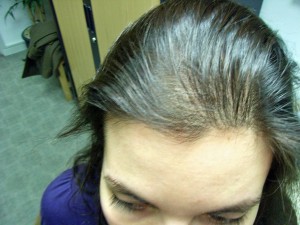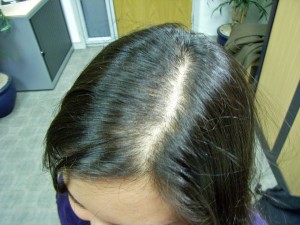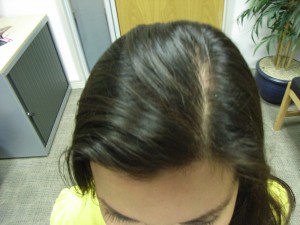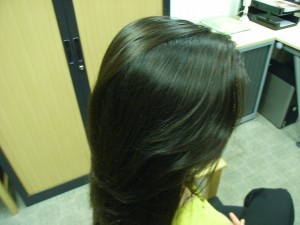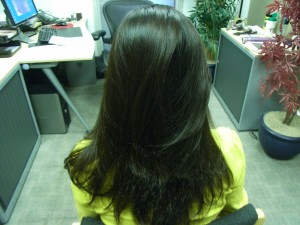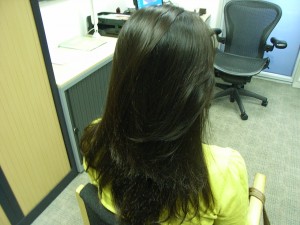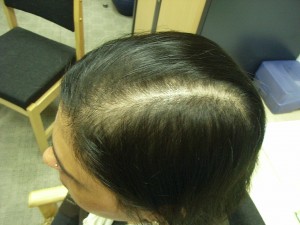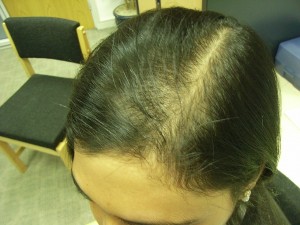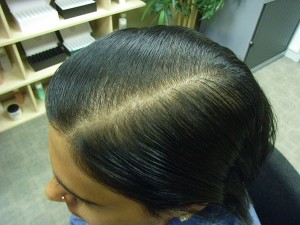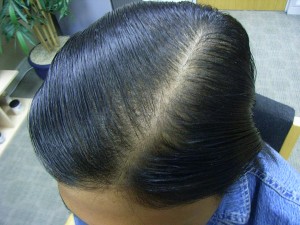29.06.2008
in FEMALE HAIR LOSS, HAIR LOSS PRODUCTS AND TREATMENTS
In today’s increasingly stressful world, the number of women suffering from hair loss is increasing. We all want to look our best and damage to a woman’s “crowning glory” can be a uniquely upsetting affliction.
Hair loss in woman can generally be seen evenly across the scalp, without definite bald patches. If this is happening to you, the following conditions may be affecting you:



Naomi Campbell Britt Eckland Jenny Bond
Diffuse hair loss is a gradual thinning of the hair as opposed to a straightforward bald patch and is the most common type of hair loss in women. The replacement of old hairs by new hairs is slowed down so that the hair becomes sparse and the scalp can be seen clearly through the hair. The causes can be numerous and include stress, restriction of the blood supply, a poor nervous system and hormonal influences.
Androgenetic alopecia (female pattern baldness) in women is often linked to hormonal changes with the hair loss following events such as the menopause, childbirth or as a result of stopping or starting oral contraceptive pills. The hair loss is generally more uniform over the scalp than in the male counterpart, but also results from a complex chemical reaction when the enzyme 5-alpha-reductase converts the testosterone in the system into DHT or dihydrotestosterone. The hair follicles are genetically predisposed to be over sensitive to the DHT and become smaller and smaller with time, leading to the eventual hair loss.
Telogen Effluvium occurs when the growing phase of the hair is interrupted prematurely causing the hair follicles to enter the telogen (resting) phase of the hair cycle earlier than normal. Two to four months later, following the normal cyclic pattern, diffuse shedding of the hair begins. When this happens there are not enough hairs left in the anagen phase, or growing phase, and the result is diffuse thinning of the hair.
Pregnancy will also affect hair production. Hormone levels increase as the pregnancy begins and slow down the hair growth cycle. Hairs that should stop growing continue to grow beyond their usual life cycle. Often this means that the hair appears to grow thicker as more hairs are present than normal. Following the birth, hormone levels change very quickly and hairs that were growing beyond their normal lifespan enter the telogen phase at this time and begin to fall out. This can sometimes appear to happen all at once and can be very worrying to the new mother.
Late onset thinning can be seen in diffuse hair loss across the scalp as density is reduced gradually. This is due to age-related hormonal changes as the natural reduction of oestrogen/progesterone production results in the hair follicles becoming smaller and smaller. These produce finer and finer hair until there is a general reduction in overall density.
If your hair loss is patchy you may be suffering from a form of alopecia:
Alopecia Areata is an extremely common condition and will affect 1% to 2% of the population at some point in their lives. Most sufferers are children and young adults (below 40 years old), though it can affect people of all ages. The hair loss is sudden and manifests itself in small, smooth-skinned patches that are likely to gradually widen with time. It can also affect the sufferer’s nails, giving them a pitted, ridged or brittle appearance. The exact cause is still unknown, although current theories include an auto-immune disease, stress or suggest a genetic basis. If the hair loss progresses until all the scalp hair is lost this is known as alopecia totalis or as alopecia universalis if all the body hair is lost as well.
Pseudopelade is characterised by the development of small, smooth patches without any clinical changes other than transient erythema (redness). The initial patch is usually on the crown of the head, but can occur anywhere on the scalp. It is generally regarded as a clinical syndrome, which may be the end result of any one of a number of different pathological processes due to a weakened immune system.
Hair loss can also have traumatic origins:
Chemical trauma can be caused to the hair by bleaching, relaxing, perming or even dying the hair. The chemicals involved in these processes can damage the hair’s protein structure, making the hair dehydrated and brittle and often causing hair loss. As well as damaging the hair’s protein structure, these chemicals are also not good for the scalp and can irritate it.
Traction alopecia is hair loss caused by constant tension on the hair, such as that created by an over-tight ponytail, plaiting or through using too tight rollers to style the hair. The action of pulling on the hair over a long period of time results in the gradual shrinking of the hair follicle and so the hairs produced become finer and finer.
Injury to the body or surgery and its associated anaesthetics and medications can also cause an interruption of the normal growth cycle. A relatively minor injury can result in disproportionably severe hair loss.
These are just a few of the reasons for hair loss. In order to treat hair loss effectively we would recommend that you have a diagnosis made as soon as possible by one of our experienced Westminster Trichologists.
Stress can be an aggravator in almost all cases of hair loss and an accurate diagnosis will always, at the very least, take some of the stress away from you.
No matter how bad you may think your hair loss or scalp disorder is it is never too late to seek advice.
You may be thinking:
“No sorry there is nothing we can do in your particular case”
Many people think it’s just too late for them and are resigned to baldness.
Do you have Hair Loss Problems, read our Hair Loss Help








